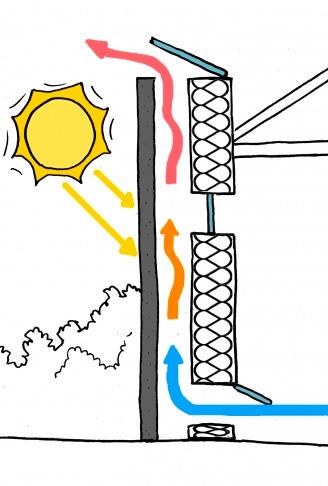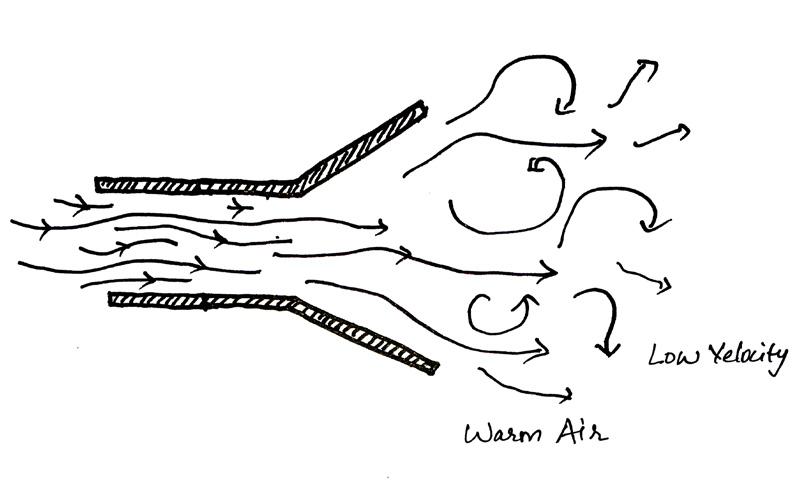
2 minute read
3.1 Concept
3.1 Concept
Adapting indoor temperature using natural air flow.
Advertisement
A combination of Trombe Wall and Solar Chimney
Trombe Wall
A Trombe wall is a passive solar building design where a wall is built on the winter sun side of a building with a glass external layer and a high heat capacity internal layer separated by a layer of air.
Solar Chimney
A solar chimney is also a type of passive solar heating and cooling system that can be used to regulate the temperature of a building as well as providing ventilation. Without letting air inside, adapting indoor temperature using principles of natural ventilation.


Principles
Principles of using Natural ventilation that can be helpful to gain internal thermal comfort without letting air inside the building.
Venturi Effect
The Venturi Effect is created when there is different opening size and relatively more difference in volume of space on both sides of the opening. The air undergoes a velocity decrease when passed from smaller crosssection to bigger cross-section and it helps air to cool-down. Visa versa, air velocity increases when passed from bigger cross-section to smaller crossection and it makes air warm. It is used in buildings for Natural ventilation purposes. It is a passive cooling method which is used for cooling exterior or interior surfaces of a building.

Static Ventilation
This concept works with natural flow of air and temperature. As air heats up, it rises and become less dense. The wind movement inside the panel will create area of low and high pressure. With a combination of differential pressure, the hot air being less dense will rise up and leaves from top, and highly dense cold air flows down .
Evaporative cooling
When hot air is forced to passed through a wet surface, the water droplets absorbs the heat from air and help cooling down air. Evaporation of water helps to passively cool buildings, reducing the energy needed for air conditioning. When combined with other passive design techniques, adequate thermal comfort might be achieved without air conditioning.











